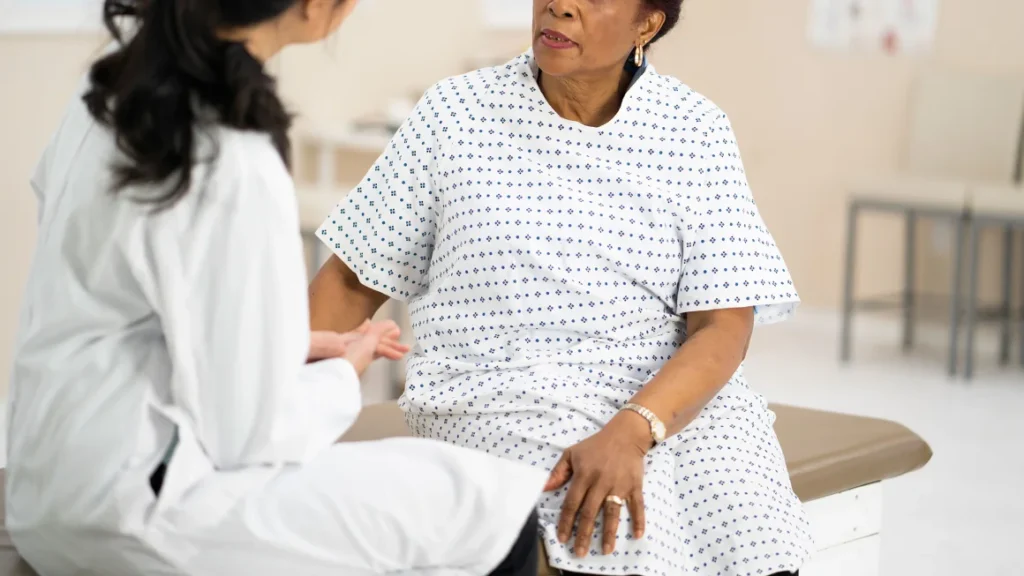
While cancer death rates in the United States are steadily falling—a sign of progress in modern medicine—a quieter, more troubling trend is emerging: more women are being diagnosed with cancer each year. This shift comes as the world faces growing public health challenges, including a worsening global HIV/AIDS crisis fueled by the recent freeze in U.S. foreign aid.
A newly released federal report offers a mix of encouraging progress and serious warnings. The 2024 Report on Cancer Trends in the United States, published in the journal Cancer, confirms that overall cancer death rates in the U.S. declined from 2001 to 2022. The trend is largely attributed to fewer people smoking, more widespread cancer screenings, and advancements in treatment—especially for lung cancer, which has seen one of the most significant improvements.
But alongside those gains, the report highlights an unsettling trend: cancer frequency rates among women have been rising slightly but steadily. From 2003 to 2021, diagnoses among women increased by about 0.3% each year. This uptick reflects shifting demographics, changing lifestyle factors, and potentially delayed diagnoses caused by the COVID-19 pandemic.
The number of new cancer cases saw a notable decrease in 2020—likely not due to an actual drop in cancer cases, but because of disruptions in health care during the height of the COVID-19 pandemic. Routine screenings were postponed, elective procedures were canceled, and many avoided doctor visits altogether. Experts now warn that this temporary drop may result in more late-stage cancer diagnoses in the coming years.
Women, Younger Adults Facing Higher Risks
The data shows a clear shift in cancer burden. While men historically had higher diagnosis rates, women—especially younger and middle-aged women—are now seeing increases in several cancer types. Current data shows that cancer risk is now slightly higher for middle-aged women than for men, and that the diagnosis rate among young women is nearly double that of young men.
Among women, stomach cancer showed the most significant increase. Researchers attribute much of this rise to a reclassification of malignant tumor by the World Health Organization. Breast cancer rates are climbing, influenced by risks such as obesity, alcohol use, and postponed childbirth.
Cancers associated with excess weight—including pancreatic, kidney, liver, uterine, and breast cancers—are also rising in prevalence. Meanwhile, colorectal cancer is on the rise among adolescents and young adults, a trend that has caught the attention of oncologists nationwide.
Despite the overall progress, the report underscores ongoing racial and ethnic disparities in cancer outcomes. For instance, Black women are 40% more likely to die from breast cancer than white women and face double the death rate for uterine cancer. These disparities are linked to differences in access to health care, early detection, and treatment options.
One factor currently under investigation is the usage of chemical hair relaxers, which may increase the risk of uterine cancer in postmenopausal Black women—a potential environmental and cosmetic risk that disproportionately affects this group.
The report emphasizes that many cancers remain preventable. Healthy lifestyle choices—including quitting smoking, maintaining a healthy weight, limiting alcohol, eating a diet rich in fruits and vegetables, and protecting skin from sun exposure—can all help reduce cancer risk.
Regular cancer screenings also remain crucial. Screening is particularly effective when cancers are detected early, before they spread. Current guidelines recommend screenings for breast, cervical, colorectal, lung, prostate, and endometrial cancers based on age and risk level.
While cancer trends in the U.S. reveal a mix of progress and concern, global health leaders are sounding the alarm over a separate but equally urgent issue: the global HIV/AIDS crisis. Recent cuts and freezes in U.S. foreign aid have jeopardized lifesaving programs in developing countries, threatening to undo years of progress in prevention and treatment. Health experts warn that the consequences could be devastating—not just for HIV patients, but for the overall stability of global health systems.
As public health professionals respond to these layered crises, one message remains clear: early intervention, equal access to care, and continued investment in research and global cooperation will be key to saving lives and preventing the next health emergency.
News Source: CNN

Sana A. is a medical student, writer, and journalist with a strong passion for healthcare reporting and a deep commitment to covering current events across the United States. As a contributor to Los Angeles Headlines, she focuses specifically on medical news, health policy, and emerging trends in the healthcare industry.






